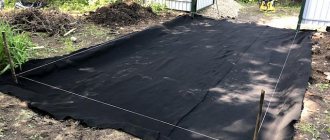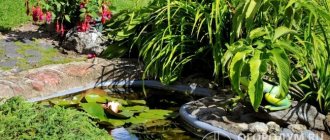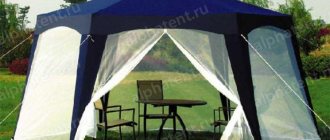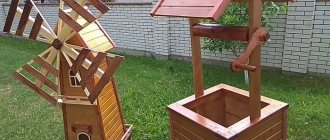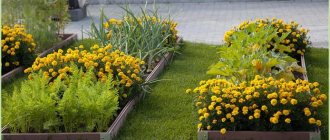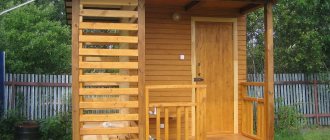Initially, architects began to plant vertical surfaces and used this method to create green recreation areas in the limited space of balconies and terraces.
The idea was so good that it was quickly borrowed by gardeners and farmers, because the height of the site is not limited in any way, which makes it possible to increase the usable space.
Nowadays, vertical beds are widely used by landscape designers, as they fit any created style.
In fact, any gardener can create such beauty on his own site. This does not require a lot of effort, skills or financial investment. And with a little ingenuity and imagination, you will create real Hanging Gardens of Babylon on your site.
A vertical bed has its advantages and disadvantages:
Advantages:
- ease of care. To plant, process and harvest, you do not need to bend down to the ground, all plants are at an accessible level
- plant leaves do not come into contact with the ground, therefore they are protected from fungal diseases
- saving useful site space
- when the temperature fluctuates sharply, such beds can be easily moved to the utility room
- the opportunity to decorate not only the landscape, but also the walls of buildings, fences, gazebos
- absence of weeds and pests in the soil
Flaws:
- Due to the small volumes of soil in vertical beds, nutrition of the root system is limited, so it is necessary to feed it with mineral fertilizers
- Perennial crops may not tolerate severe frosts; they should be brought indoors for the winter
- the soil dries out quickly, more frequent watering is required
Vertical bed made from pallets or pallets
For the garden bed, choose whole pallets that are not affected by rot and mold.
Pay attention to the factory markings. Typically, to extend their service life, wood on pallets undergoes chemical or heat treatment. Both options are suitable for growing ornamental plants, but for the beds from which you will harvest, use only thermally treated pallets. Be sure to check them for nails and knots.
To create a bed you will need: a pallet, non-woven covering material (agrofibre), burlap, thick fabric, soil, seedlings.
Let's get started:
- Clean and treat the pallet with paint or a compound for exterior use.
- cover the back side with a double layer of agrofibre, burlap or fabric
- we plant plants starting from the bottom row
- compact the soil tightly and fill all available space
- We water the finished bed and leave it in a horizontal position for a month for better root germination and soil consolidation.
- hang the bed on the wall, fence, crossbar, you can lean it against the wall
Tip: you can make pockets from agrofibre for each row of the bed. And although it will take a little longer, the soil consumption will be much less.
Idea: Pallets can become the basis for vertical flower beds and herb plantings. Paint them with bright paint, attach existing containers (flower pots or containers, buckets, painted tin cans, linen bags) and plant plants there.
Kinds
There are several types of vertical beds, among which it is worth highlighting:
- multi-tiered view;
- hanging type;
- pyramidal.
Multi-tiered
The multi-tiered type is a simple design that not only saves space on the site, but also makes it easier to care for plants. Tiered beds can even be laid along the wall of the house. The designs will also effectively decorate areas near the stairs, the walls of the barn and garage, and the garden path. A multi-level structure will make it possible to take into account the difference in the needs of each culture. For example, on the upper levels it is best to plant cucumbers, tomatoes and peppers, which prefer heated soil and good sunlight. On the lower tier it is recommended to plant beets and carrots, which need light shading and sufficient moisture.
In order to build multi-level structures, you can use:
- boxes;
- boards;
- slate;
- border tape;
- brick.
By pulling out drawers from old chests of drawers to different depths, you can make designer three-tier beds. To ensure strong support, plants are planted in plastic bottles arranged in tiers (volume 5 l). Most often, strawberries and strawberries are grown in multi-tiered structures. The fruits in them do not come into contact with the ground, which helps prevent crop contamination and infection of the crop with gray rot.
Multi-level beds can decorate the walls of the house
Hanging
The main advantage of suspended structures is the ability to place them at any height. Such devices are easy to remove for the winter. Quite often, hanging structures are used for growing pelargonium and petunias. You can build them from plastic bottles or use pots and boxes and attach fasteners to them. The following can serve as support:
- house wall;
- garage or shed wall;
- fencing;
- special racks.
Containers of various volumes and weights are suspended from the supports. Drainage systems and thick sewer pipes, 5-liter plastic bottles, and tires are ideal devices. You can also use small bright bags and plant a couple of strawberry bushes in them. You can hang the bags near the porch or on trees. When the fruiting season ends, they are recommended to be used for growing hanging plants.
Hanging beds can be hung on the veranda
Pyramid
Pyramid beds allow you not to worry about the need to create additional support. You can build a structure with 7 floors, which will make it possible to save space and even use the device as an effective element of landscape design.
To build pyramidal beds, you can use worn tires of various diameters. If you want to make a high pyramid, you should use the largest possible tire size or boards that can maintain an acceptable soil temperature as the bottom layer. However, it is worth remembering that the board will begin to rot over time. In order to extend the life of the vertical structure, prolonged dampness should be avoided and the wood should be treated with an antiseptic. By planting ampelous strawberries in pyramid beds, you can get a cascading green waterfall. Leaf blades and young rosettes will flow, rushing down, creating the appearance of an attractive garden-flower bed.
Pyramid beds will become the highlight of any site, so they can be placed even near the fence. Important! To make vertical beds with your own hands, you don’t need drawings.
Green beds made from plastic boxes
This idea of plastic bottle boxes is perfect for small plants, flowers, salads, herbs. With the help of such a vertical bed, you will not only fill the table with tasty and vitamin-rich food, but you will also be able to create cozy relaxation areas.
Vertical bed of flower pots
Using ceramic or plastic pots of different sizes you can make a very simple but very beautiful garden bed. Everything is simple here: the structure is installed according to the pyramid principle.
Fill the pot with the largest diameter with soil, and place a pot of smaller diameter on top. So we install all the pots sequentially. You can make several tiers, depending on the number of pots.
From pots of the same diameter, you can make an original bed using a metal rod with a diameter slightly smaller than the hole at the bottom of the pot. Place the first pot on the ground and drive part of the rod into the ground through the hole for stability.
Fill the pot with soil, and then string each pot onto a rod and move them in different directions. The bed is ready, all that remains is to water it and plant the plants.
Vertical bed made of construction mesh
This bed is ideal for growing flowers, herbs, vegetables and even potatoes or mushrooms.
- the construction mesh must be rolled up in the shape of a pipe, with a diameter of 80 - 90 cm.
- We lay a layer of straw along the outer edge and a layer of compost inside.
- We fill the soil in layers of 10 cm, plant seeds or tubers of plants in each layer and water them abundantly.
Instead of straw, you can use polyethylene or burlap. This garden bed looks impressive, takes up little space, is mobile and easy to maintain.
Popular plants for vertical gardening
In decoration, landscape designers use annual and perennial crops. Properly selected combinations of deciduous and flowering varieties will help create a three-dimensional structure in a small area. In order for plants to develop quickly, proper care must be provided.
Perennials
Climbing crops are used in vertical gardening. The most unpretentious is girlish grapes. During the season, the species is able to weave a small pergola, arch or trellis. Green foliage turns rich red in autumn. Living decor is directed towards the support, cutting off excess vines in spring and autumn. During the growing season, the plant is watered abundantly, fertilized and the soil is loosened.
Virgin variety Source lachat.ru
Common hop is an unpretentious fragrant perennial that quickly grows in vertical gardening in the form of pergolas and gazebos. A tall vine with beautiful cones looks very decorative. To get dense greenery, the species needs to be provided with regular moisture and abundant nitrogen-containing fertilizing. Every autumn the above-ground part is cut off, and in the spring the plant grows lashes.
Weaving view Source 6cotok.boltai.com
Amur grapes are used to create walls, arches and vaults. The color of the leaves changes during the growing season: green at the beginning, rich in summer and purple in cold weather. With proper care, the plant bears fruit:
- regular watering;
- fertilizer (5 times);
- loosening the soil;
- formative pruning of lashes.
Honeysuckle is a beautiful climbing family that is used in vertical gardening. The varieties “Kaprifol” and “Telmana” are classified as deciduous vines that bloom in May-July. By the end of the season, orange decorative (inedible) berries appear on the branches. The Giralda hybrid does not shed its leaves for the winter, remaining green until spring. The culture prefers to grow in well-lit areas and does not like acidic soil. During the growing season, garden decor is irrigated abundantly and regularly fed with organic matter. To give the bush its shape, pruning is needed.
Vertical bed-bag
The bag bed can be placed both vertically and horizontally. Give preference to a bag made of natural material, since artificial fibers will collapse under the influence of moisture and sun without lasting even one season. Make a hanging loop on top, fill it with soil and secure it in place.
Make holes in the bag and plant seedlings or tubers in them.
By the way, you don’t have to hang the bag, but install it in a sunny area of the garden or yard. The main thing is to take care of the stability or fastening of your bed.
By analogy with a bag bed, you can build mini beds from a wooden, metal or plastic barrel.
Pros and cons of raised beds in the vegetable garden
We have already noted the advantages, but tall buildings also have disadvantages:
- Moisture can escape through the side holes very quickly, so watering has to be increased.
- Due to the small amount of soil, plants need to be fed more often.
- Limited selection of plants that can be grown on the shelves.
- Annual expenses for the purchase of black soil.
Despite the disadvantages, many gardeners enthusiastically build real flower or vegetable masterpieces on their plots.
If you have already grown vegetables or berries in raised beds, tell us about your experience. If not yet, then start doing this exciting process.
Vertical mini beds made from plastic bottles
One of the most inexpensive options, as waste is used.
Place the bottle with a screwed cap horizontally and cut off the top part, using a knife to make several holes on the opposite side. It turned out to be a wonderful planting container. Having made the required number of containers in this way, assemble them with a rope into one system, as described in the previous version.
By planting low-growing, bright flowers in such a vertical flower bed, you can create entire compositions, flowering walls, and also divide your yard into zones with colorful hedges.
What do you need for a vertical garden?
There are special containers for vertical gardening on sale.
Creating a vertical garden is no more difficult than a regular one. You just need to make sure you have some components:
- A container or container for growing or creating a vertical gardening system.
- The soil . Good soil is the key to successful growth and development of plants. Since their living space is limited by capacity, it is very important to choose the right soil composition. Creating the necessary conditions begins with laying organic compost.
- Humidity . There are advantages to growing plants vertically over conventional growing, but they do not relate to hydration. Care must be taken to ensure that moisture does not flow from the upper plants to the lower ones and that they all receive the liquid evenly.
- Nutrients . If a vertical garden is made up of separate pots, then each of them will be a separate ecosystem. Therefore, in each container you need to put as much fertilizer as the individual bush or plant requires.
Vertical gardens can be placed directly on the facade of a building
Bed made of plastic pipes
Plastic pipes are affordable and easy to work with. For the beds you will need plastic pipes of small and large diameter, at least 11 cm, and possibly larger.
It all depends on the bed option you choose. A big plus here will be the possibility of creating drip irrigation, which greatly facilitates the care of seedlings. You can learn how to make a vertical bed from pipes and view the master class here.
From cinder blocks
The height and dimensions of your bed in this case depend only on the number of blocks and free space on the site. All you have to do is show your architectural skills to build a stable structure oriented to the south.
This way your plants will receive maximum light and warmth . Try to immediately choose the most illuminated, heated and protected from the wind place for the garden bed, because moving it to another place will be quite troublesome.
